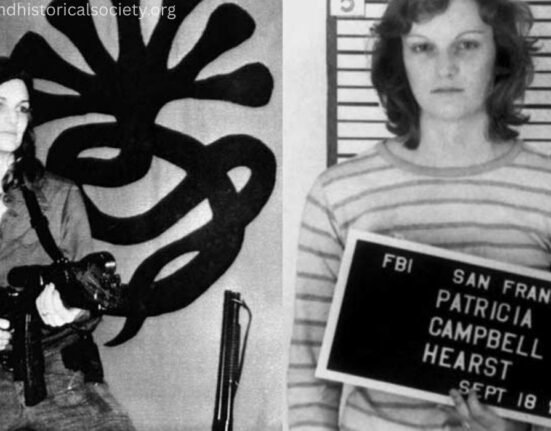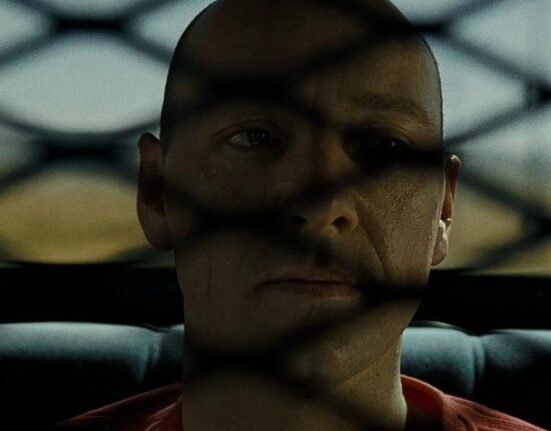Till date it is possible that we might have heard about a few people and cases that might have impacted us, made us think and question and we could feel chills running down through our spines when we first heard about those heinous crimes. Rapes, torturing before killing, strangling, mutilating and whatnot; they are just a few of the horrific things that people have done. For some, it can be very difficult to even imagine all this, but for some, it’s just a simple task.
What is the difference? What do they think and feel before doing it? What do they feel after doing it? Most importantly, how they started doing all this. These are some really big questions that have led psychologists to look for the answers again and again. In general, it is a sophisticated task to understand the human mind and behaviours. But when it comes to serial killers, it becomes a more complex riddle that requires a lot of time and energy.
Related: 6 stages of serial killers
If we look at the origin of the term serial killer, it was coined by Robert Resseler who was an FBI agent and an author. According to the American Psychological Association, a serial killer is an individual who repeatedly commits murder, typically with a distinct pattern in the selection of victims, location, and methods. Serial killers can be differentiated on the type of murder they commit, their degree of extremity and a number of people that they have killed.
Likewise, the biggest question in psychology is that whether the human behaviour and actions are consequences of nature or nurture. While studying a serial killer or criminal, this question plays an important role as there are various external and internal factors that contribute in forcing a person to become someone who is capable of doing things of extreme atrocity.
Nature refers to the internal aspects like genetics, vulnerabilities inherited and biological factors. Nurture refers to the aspects related to the outer world, environment, experiences, perceptions, cognitions and so on. It is to be taken into consideration that not only one aspect can be blamed entirely for exhibiting the behaviour of a serial killer; in most of the cases it’s both the result of nature and nurture. One can think that it results from a traumatic childhood, adulthood experiences or some tendencies that were always there. There are combinations of many things and reasons why someone ends up being like that.
The feelings of remorse and inability to think about it in any way and at the same time receive pleasure and gratification out of it, are rewarding for them. As there was an increase in a number of serial killers, criminologists and forensic psychologists began searching for some key aspects to look deeper into the complicated psyche of serial killers. Federal Bureau of Investigation established a psychological profiling in their set of tools in the 1970’s, in order to catch the killers.
Related: Forensic Psychology vs Criminal Psychology
The first psychological profiling unit was led by Patrick Mullany and Howard Teten. What were the commonalities in all the serial killers? And what motivated them? were some questions for which the unit worked and discovered various details. There were various aspects like childhood, family dynamics, and the relationship between parents. It was seen that most of the serial killers had a disturbed childhood and came from broken families. They came from homes where they saw dominant fathers or mothers or absent mothers or fathers.
It was also observed that there was an absence of father influence in the developmental years and there was disgust for the dominant mother image, which later in their lives was taken out on other women. Multiple researches have shown that they experience a lot of psychological, physical and sexual abuse in their childhood. There is a long history of psychological problems and criminal behaviours. Alcoholism, disturbed family, odd socialization ways, family violence. J.M MacDonald a forensic psychologist in the 1960s, came up with the idea that there are 3 behavioral aspects that serial killers exhibit in their childhood.
It was known as the MacDonald Triangle, which had a triad of homicidal personality. The 3 elements are bed wetters, fire setters and animal killers. This triangle was applied to some serial killers and it even provided a lead in a few cases. Some most famous serial killers like Ted Bundy, Jeffery Dahmer and Dennis Radar were all tortured and killed animals in their childhoods.

However, this theory could not hold its place as a tool, as the researchers found the need to include more and more aspects to be taken into consideration. Behavioural studies established that a dysfunctional childhood led to a cool-hearted person with a lack of empathy. Empathy played an important role because it came from the parents and according to it, empathy was conditioned.
Related: The Psychology Behind the Chilling Case of Jeffery Dahmer
The prominent characteristics of a serial killer are lack of empathy, paraphilia, lust, fantasizing, being socially isolated and having a general hatred for the world established by their experiences. Based on their disturbed experiences, they often get obsessed with voyeurism, pornography and violence. These aspects lead them to develop fantasies that are arousing in nature and they feel the need to act it out. For them, it is important to act out those fantasies in order to seek pleasure, thrill and satisfaction. The psychological profiling unit of the FBI also identified that the mind and personality of a serial killer are different from that of a normal individual. A normal person cannot think of fantasizing about a killing and derive a thrill from it, but for a serial killer, it appears to be a normal thought as their beliefs and thought patterns are grounded on dysfunctional realities.
Various motivations were recognized that motivate a serial killer like inferiority, need for power, fear of rejection, anger, sexual frustration, need for acceptance and pornography. Research in the field of neurocriminology is trying to discover if some people are predisposed to violent behaviours at birth. There are studies and FMRIs (Functional Magnetic Resonance Imaging) that looked at the normal brain and brain of those people who were psychopathic. It was observed that there were differences in the neuroanatomy and this data showed that some are more predisposed to a particular pattern of thinking.
A research done by Dr. Adrian Raine, professor of criminology at the University of Pennsylvania in 2013, released a study that observed the neurological brain imaging of serial killers, violent criminals and murderers. In the study, it was observed that the brains of serial killers were different from the brains of the normal people as there was a decreased activity in the area of the brain that is responsible for processing emotions, sensitivity to violence and linked with self-awareness. These people had less functioning in the prefrontal cortex, the area that helps regulate and control behaviours.
Related: What Goes on in a Psychopath’s Mind?
This part according to Dr Raine was called the ‘guardian angel of behaviour’; he quoted that “if it’s asleep, the devil can come out”. This was the functioning of killers who acted out of rage. But if we look at serial killers, they have high functioning in the prefrontal cortex and less functioning in the amygdala, the part which is the seat of emotion that involves consciousness, remorse and empathy. In serial killers, amygdale was physically shrunken by 18%.
This can give an explanation for why they killed without feeling any emotions of remorse and guilt. Another interesting study done by neuro criminologists established a biological aspect of antisocial behaviour which is low resting heart rate. It was speculated that people with low rates do not feel fear strongly like other people. They can be prone to more violence and someone who can take more risks as they are less fearful of the results of it. Another aspect here was that people with low heart rates feel to have a dull life and seeking thrill and longing for stimulation can make them do that.
The most surprising thing that Dr Raine discovered was that he also had a very low-functioning amygdala and his brain scan was closely matched with a scan of a serial killer named Randy Kraft popularly known as The Scorecard Killer. It was observed that Dr Raine grew up in a healthy and loving environment and that was the major aspect that did not turn him into a serial killer. This evidence can make us think about the various factors that make a person into someone evil and hard to explain. External and internal factors are both present when we look at the bigger picture.
Related: The Enigma of Evil: Deconstructing Ted Bundy’s Criminal Psychology
The aspect that we should try to understand is the environment that is available for the people, which makes them into what they are, and what role society plays in understanding when it comes to someone who is not understood as the conventional “normal”. What and how it can impact a person who has already suffered and still continues to suffer it?













Leave feedback about this